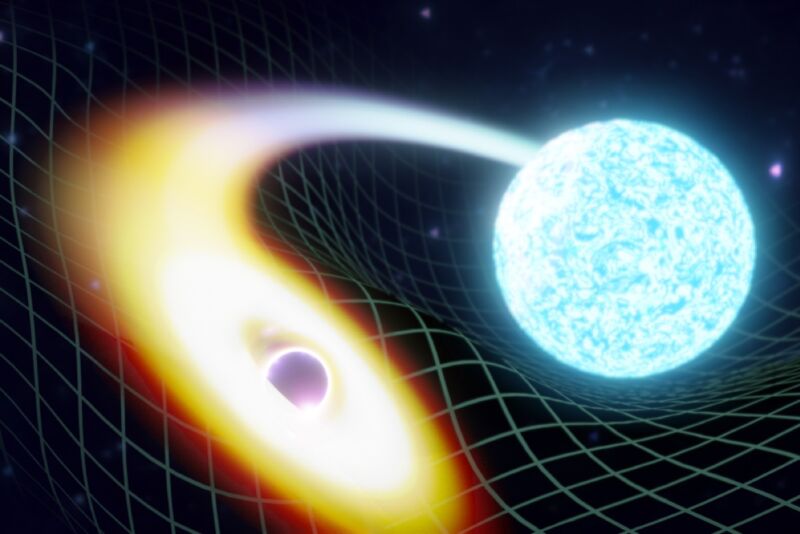Gravitational waves reveal “mystery object” merging with a neutron star

Enlarge / Artistic rendition of a black hole merging with a neutron star. LIGO/VIRGO/KAGRA detected a merger involving a neutron star and what might be a very light black hole falling within the "mass gap" range. (credit: LIGO-India/ Soheb Mandhai)
The LIGO/VIRGO/KAGRA collaboration searches the universe for gravitational waves produced by the mergers of black holes and neutron stars. It has now announced the detection of a signal indicating a merger between two compact objects, one of which has an unusual intermediate mass-heavier than a neutron star and lighter than a black hole. The collaboration provided specifics of their analysis of the merger and the "mystery object" in a draft manuscript posted to the physics arXiv, suggesting that the object might be a very low-mass black hole.
LIGO detects gravitational waves via laser interferometry, using high-powered lasers to measure tiny changes in the distance between two objects positioned kilometers apart. LIGO has detectors in Hanford, Washington state, and in Livingston, Louisiana. A third detector in Italy, Advanced VIRGO, came online in 2016. In Japan, KAGRA is the first gravitational-wave detector in Asia and the first to be built underground. Construction began on LIGO-India in 2021, and physicists expect it will turn on sometime after 2025.
To date, the collaboration has detected dozens of merger events since its first Nobel Prize-winning discovery. Early detected mergers involved either two black holes or two neutron stars, but in 2021, LIGO/VIRGO/KAGRA confirmed the detection of two separate "mixed" mergers between black holes and neutron stars.